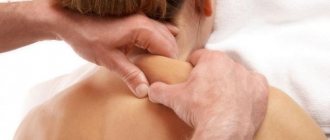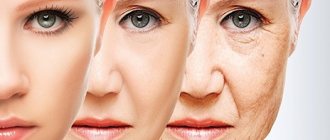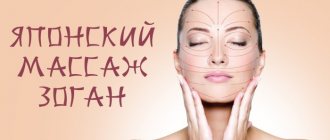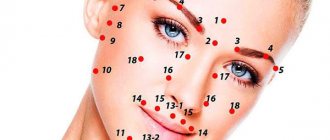This question arises not only among those who engage in self-massage. Cosmetologists who actively use facial massage in their practice often face the problem of acne appearing after a massage.
In September 2022, I conducted a super useful webinar on self-facial massage, where, among other issues, I discussed this topic in detail.
If clogged pores or pimples appear after a massage, I suggest you the following algorithm of action.
- Wash thoroughly after facial massage
- Use massage gel
- Slow down
- Rashes don't just come from massage.
Wash thoroughly after facial massage
If you started practicing facial massage and then notice rashes, first of all pay attention to cleansing.
The instructions for a massage cream often indicate that after a massage it is enough to blot off the excess product with a napkin.
But this can be done in cases where we are talking about a light facial massage for 3-5 minutes. Essentially, this is a situation where you apply the required amount of cream or cream mask that does not require rinsing to your face and lightly massage the skin so that the product is better absorbed.
If we are talking about a full massage, when the session lasts 10-20 minutes or more, the situation is different.
- Firstly, we take quite a lot of cosmetics, even too much.
- Secondly, for 10-20 minutes we actively massage the skin using a massage product. Naturally, in such cases, the cream can cause clogging of the pores.
- Plus, don’t forget that peeling occurs during the massage. We exfoliate dead cells and after the session all this remains on the skin.
Therefore, I recommend always washing your face thoroughly after a facial massage.
How to properly wash your face after a massage
If we are talking about dry or aged skin 40+ or 50+, when there is no tendency to clog pores, it is enough to wet your fingers with warm water and massage your face well for 1 minute.
The massage cream will turn into milk and it will be enough to simply wash with water.
This is what I usually do.
If you are prone to breakouts or clogged pores, be sure to wash your face with a cleanser - foam or gel.
By the way, one of the most common mistakes when cleansing your face is applying foam for just 15-20 seconds. After which the person washes off the foam in the hope that the facial skin is well cleansed. But that's not true!
The fact is that gentle cleansers work not only delicately, but also slowly and a few seconds are definitely not enough to cleanse the skin. It is necessary to massage the skin of the face with foam for a minute. And in some cases it is worth repeating the procedure twice.
By the way, I wrote about this mistake in my book “55 Mistakes in Facial Care.”
How to get rid of it?
daily personal hygiene and skin care help prevent unwanted inflammation and rashes . You should buy soap with benzoyl peroxide at the pharmacy.
To treat rashes on hard-to-reach areas of the back, it is recommended to use medicated sprays or lotions with salicylic acid.
For personal hygiene, use products containing glycolic and lactic alpha hydroxy acids, which accelerate epithelial exfoliation, cellular metabolism and reduce the number of clogged pores. More powerful products can be used for the back, legs, chest, gentle ones - for sensitive skin of the face and neck.
To get rid of acne, the following are recommended:
- medicinal lotion Lipacid (GIGI);
- ichthyol mask “Solar Energy” (Solar energy mud mask);
- pharmaceutical ointments Baziron, Skinoren, Zinerit.
Acne bumps quickly resolve when using a mud mask produced by Gigi Cosmetic Laboratories (Israel), which nourishes the skin with minerals and vitamins and produces an antiseptic (anti-inflammatory) effect.
Traditional medicine suggests using tar soap, taking medicinal baths based on decoctions of medicinal herbs or adding sea salt or a solution of potassium permanganate. Large, few pimples can be cauterized with iodine.
Squeezing out pimples is unacceptable.
In case of serious skin rashes after a massage, you should consult a dermatologist to prevent their progression and complications. You may need to use antibiotics, antipruritic, drying, and antibacterial external agents. Taking antibiotics on your own is strictly prohibited.
Use massage gel
If you wash your face thoroughly after self-massage, but still get rashes, try changing your massage product.
Oils or creams that contain a high percentage of lipids contribute to clogging of pores.
Switch to gel.
For example, you can use a gel moisturizing mask for massage. The main thing is that the gel is sufficiently dense, jelly-like and gives good glide.
For long-term gliding, you can periodically wet your fingertips in water.
Self-massage of the face “Renaissance”, technique #2 – “Waterfall”
What are the indications for buccal massage?
After 30 years, the production of natural collagen and elastin gradually decreases, the skin loses elasticity and tone, which leads to the formation of facial wrinkles. That is why cosmetologists recommend that women after 30 years of age pay special attention to the condition of muscle tissue101.
Before carrying out the procedure, you must consult with an experienced massage therapist who will select the best option for massage procedures. As a rule, buccal massage is performed in the presence of conditions such as101:
- partial or complete paresis after a stroke;
- excessive accumulation of adipose tissue in the malar area;
- sagging facial muscles;
- decreased skin turgor;
- severe swelling of facial tissues;
- decreased clarity of the oval of the face.
Please note that only an experienced massage therapist can determine which type of massage is appropriate for a particular situation.
Slow down
If you thoroughly cleanse your skin, if you have already switched to gel, but after a massage you still get rashes, I advise you to slow down a little.
Even on an intensive course, massage once a week. The fact is that during self-massage we activate all processes, including the work of the sebaceous glands.
This is good for aging or aging skin - when sebum secretion is reduced, activation of the sebaceous glands will be beneficial.
If we are dealing with young skin, with normal or increased sebum secretion, frequent massage sessions can contribute to increased sebum production, clogged pores and the appearance of acne.
How dangerous is this?
Acne on the face and body can cause psychological trauma in schoolchildren and adolescents. Complex treatment and adequate procedures (for severe acne) should be selected and supervised by a doctor. You will need both oral medications (antibiotics, retinoids, isotretinoin) and local treatment.
Pimples often cause itching and even pain. The infectious and inflammatory process in the tissues is accompanied by purulent pimples with cloudy exudate inside. Pimples on the body with swelling and redness of the surrounding tissues, affecting deeper layers in addition to the epidermis, are fraught with the spread of infection throughout the body.
Severely inflamed acne without proper treatment by a dermatologist can leave deep scars and scars.
Rashes don't just come from massage.
If rashes appear after a massage, you need to remember that after does not mean as a result. Perhaps the massage sessions coincided with other factors. For example:
- You consumed a lot of dairy products, which can contribute to clogged pores, and at the same time included facial massage in your beauty routine.
- Maybe new products have appeared in care that help clog pores.
- It may be due to hormonal changes in the body.
In any case, remember that rashes may not be associated with massage or errors in using facial self-massage products.
Cancel the massage for a while and see if the problem goes away?
Does the procedure have any disadvantages?
Many modern women refuse plastic surgery in favor of a manual method of skin rejuvenation. However, this method of combating aging has disadvantages101:
- During the procedure, not all facial muscles are worked;
- hematomas may occur at the site of exposure;
- the procedure is accompanied by painful sensations.
One of the serious disadvantages of the technique is the insufficient number of experienced massage therapists who are fluent in the technique of buccal therapy. Please note that the final result of the procedure largely depends on the qualifications and skill of the massage therapist.
Diagnostics
Itching after tanning requires the help of a specialist. If this problem occurs regularly, then you need to visit a dermatologist or allergist.
The doctor will conduct an external examination, prescribe laboratory tests and skin tests. After receiving the examination results, a diagnosis will be made and treatment will be prescribed.
The most accurate information is provided by a photo test. This technique involves irradiating specific areas of the skin for several minutes.
If after some time symptoms of hypersensitivity appear, the diagnosis is confirmed. Additionally, they resort to general clinical and biochemical blood tests.
Hygiene and care
In a situation where a patient has problem skin, it is necessary to take various measures that are aimed at preventing the formation of a rash. It is required to provide appropriate care for it.
It assumes:
- Taking 15-minute baths with potassium permanganate. After the procedure, you should not rub the dermis vigorously, as this provokes infection of the skin. It is optimal to dry your back with a towel.
- Compliance with the sequence of hygienic manipulations. Initially, the head is washed, then the body. This is done to avoid clogging of pores.
- Wise choice of washcloth. Do not use an overly hard or soft washcloth. Do not use scrubs, pumice stones or other rough devices on affected areas. Avoid visiting solariums. This may cause burns.
- Avoid using oils for massage. These products contribute to clogging of pores, provoking inflammatory processes.
- Refusal of tight clothing. This causes increased pressure on the acne itself.
By following the above instructions, it is possible to get rid of unpleasant symptoms in the shortest possible time.
Is it possible to exfoliate skin with acne?
Peeling helps exfoliate the stratum corneum of the epidermis, cleanse pores, and accelerate cell regeneration. The procedure is carried out using abrasive compounds, fruit acids or degrading keratolytic enzymes. The choice of peeling largely depends on the type of problem that needs to be solved. 171
In the presence of inflammatory elements, mechanical peeling is not performed. Exposure to abrasives can damage the cap of the abscess* and spread the infection. Superficial peeling is allowed, but when performing the procedure, the skin should be thoroughly disinfected and large areas of inflammation should be avoided. 171
Diet
Treatment for a rash on the shoulders will give a positive result only when the original cause of the inflammatory process is identified. Treatment should begin with adjusting the diet.
For these purposes, the following instructions must be followed:
- Refuse or minimize the consumption of fatty, sweet and fried foods.
- You need to drink the required amount of liquid.
- Saturate the menu with vegetables and fruits.
- Take vitamin complexes that help improve the health of the dermis.
- Drink kefir daily to remove toxic substances.
Allergic reaction
In this case, the pimples that appear differ from ordinary rashes. They are small, red, similar to hives and greatly interfere with life due to persistent itching. In addition, swelling or a runny nose may appear.
Ultraviolet radiation itself cannot cause allergies. But if a person took certain medications before visiting artificial sunbathing, such mixing may lead to an undesirable reaction.
Another cause of allergic rashes is an allergy to cosmetics that are applied to the skin before a solarium - “developer” - or after it - “fixer”. Sometimes such an allergy appears the second or third time.
The third reason is household cleaning products used to clean the solarium booth. Cleaning products themselves are usually very allergenic, and when combined with a tanning bed, this ability is enhanced.
It so happens that even after visiting a solarium in a familiar salon for many years, you may come home with an allergy. The “diagnosis” is simple - the detergents in the salon were changed.
Additional factors that cause acne
The appearance of acne, in addition to the main reasons, can be caused by the patient’s habits. The protective functions of the skin are greatly weakened as a result of the procedure, so even previously harmless actions can cause a rash.
- If pimples appear on only one side of the face, and their main location is from the corner of the lips to the ear, then it is highly likely that the cause is the phone. When you touch the phone, bacteria are transferred from your fingers to its surface, and during a conversation - to your skin.
- Probiotics recommended by a cosmetologist after a cleansing session will help get rid of acne. But in rare cases they cause rashes and redness. If your skin condition has not improved within a couple of weeks, you need to contact the specialist who performed the procedure.
- One of the common causes of acne is using regular tap water. It contains metals that can cause allergies. If before cleansing the skin from harmful effects it was protected by a layer of keratinized cells, then after cleansing it remained defenseless. In addition, metals contained in water oxidize when they come into contact with the skin, and this is reflected in the pH level. Under the influence of these factors, rashes appear. To avoid this, you need to wash your face in the first days after the procedure with boiled or filtered water.
Acne can also be caused by additional treatments or skin care products. Therefore, you should not abuse them, especially after a facial cleansing session.
Kinds
Painful and unsightly purulent acne occurs as a result of various viruses and bacteria entering the subcutaneous layer.
They differ in type and size:
- Papules.
- Pustules.
- Knots.
- Cystic formations.
- Comedones.
Papules
A papule is a regular small red pimple that looks like a nodule. Its appearance is caused by the rupture of the follicle and the entry of its contents into sufficiently deep layers of the skin.
Pustules
A pustule is a small purulent pimple, shaped like a blister, filled with a pus-like substance, and surrounded by inflammatory redness.
Nodes
Nodules, which in most cases cover the cheeks, chin and back, are the subsequent stage of development of pustules, in which the inflammatory process penetrates into the deeper layers of the epidermis.
Cysts
Cystic formations are pustular formations that cause a person quite strong pain.
Comedones
Purulent pimples can be closed comedones, which dermatologists often call whiteheads.
Whitish comedones have a diameter of approximately 1-2 mm. They become most noticeable when the skin stretches. One of the characteristic features is that when you squeeze a pimple, its contents are practically not released.











